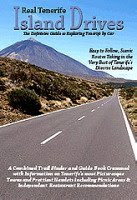
This week we've got a virtual house guest, the sort of guest who's a real pleasure to have; he eats whatever we're eating, causes no extra washing up or expense and is as funny as an MP's expenses claim. However he is moaning (a lot) about the lack of scones here!
Mike Harling has come to us from the US, via West Sussex and has an extremely funny book out called 'Postcards from across the Pond' about his life as an ex-pat. Buy it, it's a real hoot and a perfect holiday read.
So here, without any further ado, is Mike Harling...
Going Native Across the PondAhhh, back on the beach. Tenerife is nice; I like visiting a place I have to look up on Google Earth to find. Turns out, it's one of the Canary Islands, so I've been in the neighborhood before. If you don't know where the Canary Islands are, I suggest Google Earth.
My new best friend Andy (anyone who invites me to their home, supplies me with unending amounts of barbecued shrimp, cold Corona and Cuban cigars and allows me to post about my book on their blog--which is supposed to be about their book--is automatically my best friend) not only located Tenerife on a map, she moved here. Seems she got tired of the stunning scenery, the variable climate and amazing history of Britain and decided to settle for constant sun, sandy beaches and spectacular mountain vistas.
Not satisfied with that, she wrote a book about how you can do it, as well, if you are so inclined. Strikes me as a bit of a niche market; my book may be about life in Britain but it's a humor book. So if you want to laugh,
buy my book; if you want sun and sandy beaches, buy Andy's
Actually, I completely understand the allure of moving to someplace like this; it happened to me once:
In a long ago December, I left my land of cold and snow in upstate New York (try minus 28 degrees centigrade, Sparky, and we measure our snow in feet, not centimeters) for a week of sun and surf and scuba diving in St. Maarten. I was so totally captivated by the sunshine, warm ocean breezes and laid-back life style that I actually did begin looking into moving there.
It turned out to be a daunting task. What I needed was an Andy Mont of St. Maarten to have written "Going Native in St. Maarten," but there was nothing of the kind. Too bad, I could now be enjoying a life of simple pleasures, making a living carving drift wood into tourist-pleasing shapes or serving drinks with umbrellas in them to sunburned New Yorkers, rather than having to go on these grueling tours just so I can sell enough books to help me pay my heating bill through the long, damp British winters.
"What's that, Andy? A margaretta? Why, thank you, I'd love one."
Now where was I? Oh yes, Britain, and leaving it.
Being a relative newcomer to Blighty, I still regard Britain as an exotic place, so I'm happy to remain there. Besides, dark and dreary as it can be, the climate is still paradise compared to what I left behind. It's all a matter of perception.
Even so, Andy won't have a hard time convincing me to come back for a visit.
Would you like to participate in the
2009 KINDNESS of STRANGERS TOUR?
Visit the Tour Page to sign up or to view the latest Tour updates.
Michael Harling is an American author living in the UK





 If you recognise them and it fits your picture of this incredibly diverse island, then hat’s off to you, you know the real Tenerife pretty well…on the other hand, if they’re nothing like the Tenerife you imagined, or thought you knew, then there’s a wonderful island out there just waiting to be discovered.
If you recognise them and it fits your picture of this incredibly diverse island, then hat’s off to you, you know the real Tenerife pretty well…on the other hand, if they’re nothing like the Tenerife you imagined, or thought you knew, then there’s a wonderful island out there just waiting to be discovered.











